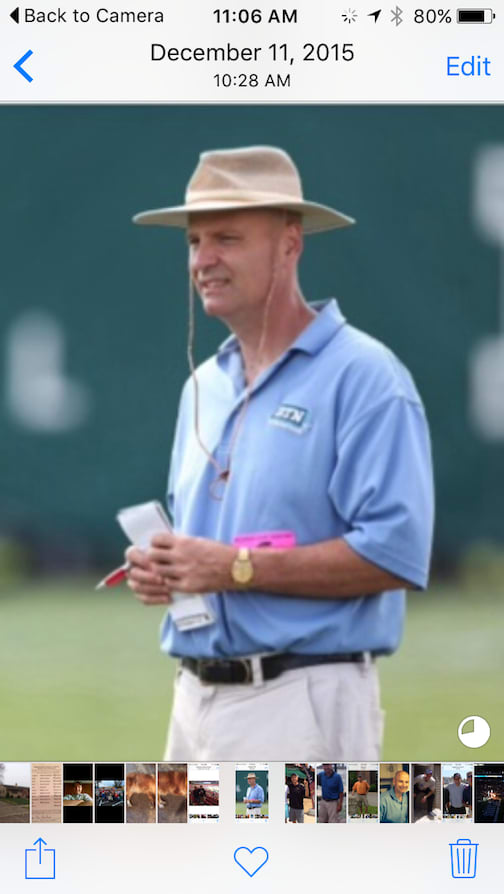
MORE TIME WARPS: Sept. 5, 2004: Purdue pummels Syracuse, 51-0 | Sept. 12, 1992: Purdue stuns Cal, 41-14 | Sept. 19, 1998: Purdue stymies UCF and Culpepper, 35-7 | Sept. 26, 1981: Purdue stuns Notre Dame late, 15-14
As we wait for Big Ten football to begin, GoldandBlack.com has been looking back at big Purdue victories on dates the Boilermakers were slated to play on their original 2020 schedule.
Today—October 3—Purdue would have been off during an off week. Let’s look back on the Boilermakers’ biggest win ever on October 3.
October 3, 1970
Purdue 26, No. 3 Stanford 14
The set up: The Jack Mollenkopf era was over, a halcyon period that saw the Boilermakers go 84-39-9 with a Rose Bowl trip in the 1966 season. "Jack the Ripper" also led Purdue to a Big Ten title in 1967 in the most successful coaching run in school history. But Mollenkopf had to step down after the 1969 season due to cancer.
Long-time assistant Bob DeMoss was the new man in command as a new decade dawned. Could the coach who groomed quarterbacks like Bob Griese and Mike Phipps keep the Boilermakers rolling after the highly successful 14-year Mollenkopf era?
Purdue opened the season with a 15-0 win at home vs. TCU. But that was followed by a 48-0 evisceration at No. 6 Notre Dame. Next up was another daunting game: at No. 3 Stanford, which was quarterbacked by Jim Plunkett. How would Purdue perform coming off the humiliation in South Bend, Ind.?
What happened: Purdue had established a reputation as a “giant killer.” And this win at highly-ranked Stanford further cemented that label.
“My staff and the kids — they did it all,” said DeMoss after he was told he had been named UPI Coach of the Week following the upset.
DeMoss took a banged-up team to Stanford to play vs. Plunkett, a senior who the year before had tossed four TD passes in an epic battle vs. Phipps in Ross-Ade Stadium won 36-35 by Purdue.
The Boilermakers had Plunkett’s number again, intercepting the eventual 1970 Heisman winner five times and recovering two Stanford fumbles. Purdue safety Randy Cooper picked off three passes and recovered a fumble for the Boilermakers, who were 19-point underdogs. Plunkett--the No. 1 overall pick in the 1971 NFL draft--completed 15-of-36 passes for 200 yards with a TD pass and rushing score.
And the Boiler offense did its part, too, showing life behind sophomore walk-on quarterback Chuck Piebes, who connected on 15-of-20 passes for 120 yards for a Purdue squad captained by Donnie Green and Veno Paraskevas. Purdue built a 16-0 halftime edge and never looked back on this day in Palo Alto, Calif., vs. a Stanford team coached by John Ralston that would go on to win the Pac-8 by going 9-3 overall and 6-1 in league play, beating Ohio State in the Rose Bowl and ranking No. 8 in the final AP poll.
Story continues below photo
Why it mattered: The big upset victory at Stanford made Purdue 2-1 and lifted the hopes of fans, but it bore no fruit. Purdue would go on to lose 29-0 the next week vs. No. 7 Michigan en route to finishing 4-6 overall and 2-5 in the Big Ten. It was Purdue’s first losing season since going 3-4-2 in 1956.
This dreary season was a sign of things to come in the oh-so-brief DeMoss era. Purdue went 3-7 (3-5 in the Big Ten) in 1971 and followed that with a 6-5 mark (6-2 Big Ten) in 1972.
That ’72 team was one of the most talented in school annals, producing three first-round choices in the 1973 NFL draft: Dave Butz (No. 5 overall), Otis Armstrong (No. 9) and Darryl Stingley (No. 19). Five other players were selected in that 1973 NFL draft.
DeMoss was gone after the 1972 season, going 13-18 in three disappointing seasons.
The aftermath: The belly flop 1970 season set Purdue off course. Alex Agase was hired from Northwestern in 1973, but he was largely unimaginative in going 18-25-1 in four seasons. Jim Young’s arrival in 1977 got the Boilermakers back on track.
Still, had DeMoss been able to build on the momentum started by Mollenkopf—who died in 1975 at 72—perhaps Purdue would have become an even stronger program as the 1970s progressed.

Membership Info: Sign up for GoldandBlack.com now | Why join? | Questions?
Follow GoldandBlack.com: Twitter | Facebook | YouTube
More: Gold and Black Illustrated/Gold and Black Express | Subscribe to our podcast
Copyright, Boilers, Inc. 2020. All Rights Reserved. Reproducing or using editorial or graphical content, in whole or in part, without permission, is strictly prohibited.
